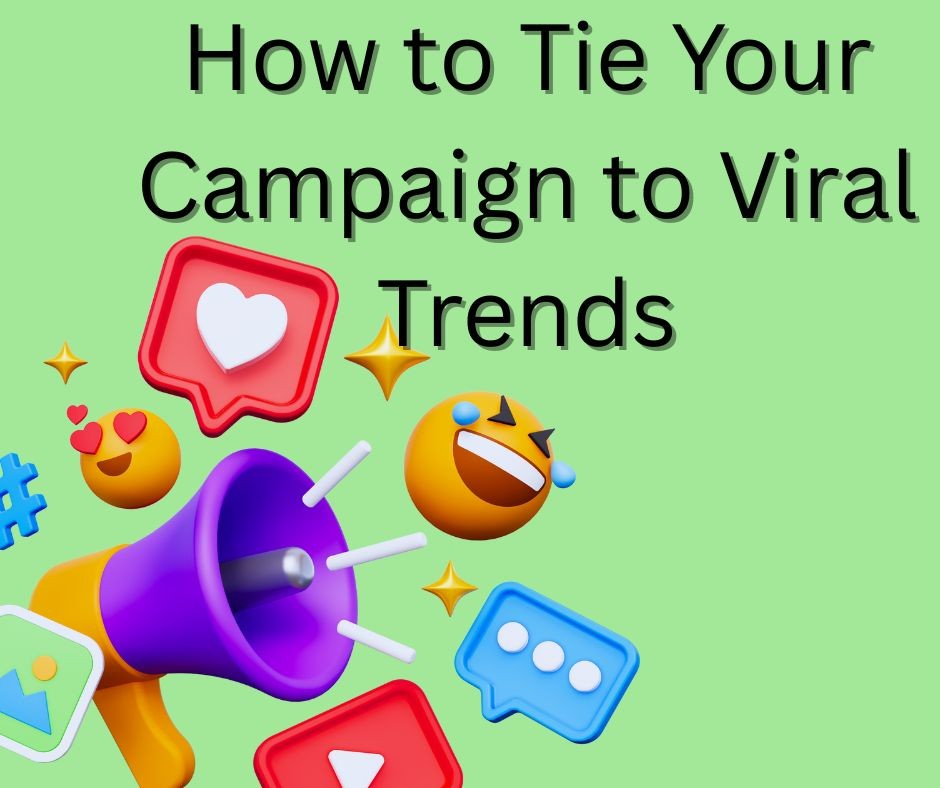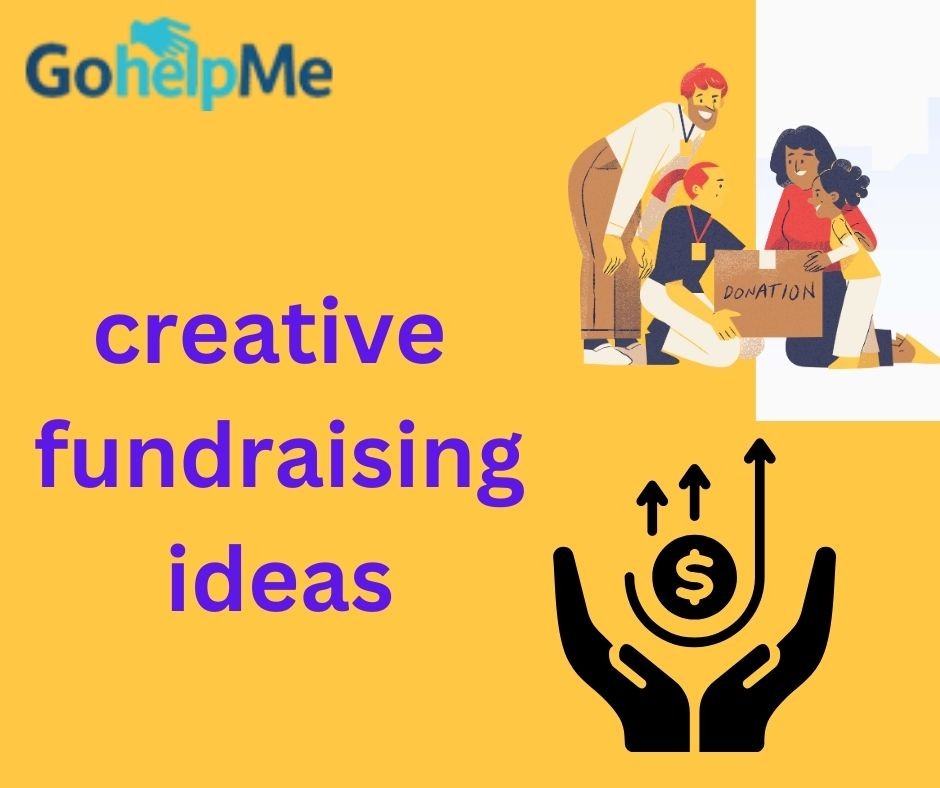How to Tie Your Campaign to Viral TrendsUnderstanding the Power of Viral Trends
Let's face it: the internet world is fueled by viral phenomena. From meme templates to TikTok dances, they may instantly make your business a household name on the internet. However, what qualifies a movement as "viral"? It all comes down to timing, relatability, and mass participation. Here we will know about how to tie your campaign to viral trends.

How Does a Trend Become "Viral"?
When a trend is extensively discussed, copied, or shared on various platforms, it becomes viral. Frequently, it begins with a spark—a picture, a video, or a sentence—that spreads over the internet.
The Need for Campaigns to Follow the Trend
Because they capitalize on preexisting momentum, campaigns that link to current trends have a higher chance of connecting with viewers. Instead of starting from zero, it's like hopping on an already-moving train.
Timing is Everything Catching Trends Before They Peak
Jumping in just before a trend blows up is the golden spot. You become simply another voice in the mob once it reaches saturation.
Using Tools for Trend Forecasting
Use resources like BuzzSumo, Exploding Topics, and Google Trends to stay ahead. These allow you to see what's popular before it becomes widely accepted.
Get to know your audience well.
Determine What Your Audience Already Enjoys Before following a trend, consider whether it fits with what your audience enjoys. Joining a meme trend your fans don't care about is pointless.
Digital Behavior and Demographics
40-year-olds on Facebook interact differently than teens on TikTok.
Social Listening:
Your Trend RadarTools for Monitoring Viral Content
Use platforms like Brand24 or Sprout Social to listen to what's trending in real time. These tools act like a digital ear to the ground.
Hashtag and Meme Tracking
Follow trending hashtags and viral meme pages. They're the frontline for what's hot and what's not.
Building a Trend-Responsive Campaign Strategy:
Reactive vs. Proactive Marketing
Being reactive entails reacting to trends as they emerge. Being proactive means scheduling trend-based material and making time on your calendar for it.
Planning Flexible Content Calendars:
Give trendy content 20–30% of your posting schedule. It allows your brand to remain current and relevant.
Creative Content is KingCrafting Trend-Aligned Visuals and Copy
Don't simply repost. Remix. Use imagery and messaging consistent with your brand voice to personalize the trend.
Real-Time Content Creation Tips:
Have templates on hand. Make sure your design team is ready. You're unimportant if you're late; thus, speed is essential.
Work Together With Trendsetters and Influencers:
Finding and Dealing with Micro-Influencers:
Trends are frequently first pushed by micro-influencers. They typically have highly engaged audiences and are more reasonably priced.
Collaborating to Produce Effective Content:
Don't just work through influencers; collaborate with them. Letting them contribute their voice and style will make them feel more genuine.
Platform-Specific Adjustment to Trends:
Campaign Strategies on TikTok:
Take advantage of challenges, popular music, or viral videos that feature your business.
Instagram Challenges and Reels:
Make use of popular formats, songs, and effects. Reels under 30 seconds work best, so keep it brief.
Memes & Threads on Twitter:
Be clever, reply promptly, and utilize pertinent hashtags. Timeliness and inventiveness are rewarded on Twitter.
Add Value Instead of Just Following:
Share Your Perspective on the Trend:
Simply following a trend is indolent. Include your voice, humor, and point of view. Brands stand out in this way.
Adding Meaning and Purpose:
Integrate trends with your goal. Make it more than just entertainment, whether sustainability or social justice.
Examples of Successful Campaigns for the ALS Ice Bucket Challenge:
Among the most effective trend-tied campaigns ever. Why? It had a purpose, was easy to discuss, and was straightforward.
Oreo's Tweet from the Super Bowl:
"Is the power out? No issue. During a blackout, one tweet became a marketing gem. Takeaway: be prompt, astute, and pertinent.
The Use of Trends with Ethical Considerations
Preventing Cultural Errors:
Don't take advantage of misfortunes. Avoid cultural appropriation. Ask yourself, "Is this respectful?" and reconsider.
Remaining True to Yourself and Avoiding Opportunism:
Don't follow a trend if it doesn't fit your brand values. Fakeness is detectable at a distance.
Assess and Examine Your Important Impact Metrics:
Keep tabs on comments, shares, engagement, and rate views. They demonstrate the extent to which your article struck a chord.
Making Real-Time Adjustments Using Data:
Change course if something fails. If something works, reuse it on several platforms or enhance it with advertisements.
When to Stop Following a Trend:
Indications That a Trend Is Ending
It is likely past its peak if it has appeared on grandma's Facebook or morning talk shows.
How to Turn Around Discreetly:
Avoid abandoning the trend. Finish it off creatively and start working on new, original material.
Making Your Campaign Strategy Future-Proof:
Creating Teams That Are Trend-Ready:
Teach your teams to recognize patterns, take quick action, and maintain their creativity under duress.
Maintaining Creativity and Agility:
Continue experimenting. Brands that change over time are the ones that endure.
In conclusion :
know when to surf back after riding the wave.
More quickly as a June storm, trends come and go. Being able to ride the wave while maintaining your brand integrity is crucial. Your campaign can take control of the trend if it has the proper plan, resources, and attitude.
FAQs
1)How can I recognize an early viral trend?
To spot emerging trends before they become well-known, use resources like Google Trends, TrendHunter, or TikTok's Discover tab.
2)Can every campaign, given the correct trend, go viral?
Not all the time. It needs to fit your message, audience, and brand. In most cases, forced trend-hopping fails.
3)What happens if a trend goes wrong?
Recognize, offer an apology if required, and change course. Even when things go wrong, transparency fosters trust.
4)How much money is required to follow a trend?
Sometimes none. In many cases, a smartphone and good timing are sufficient. Although they can help, paid advertisements are not always necessary.
5)Should my campaign be linked to a trend at all times?
Not at all. Only when it feels true and adds value. It's wise to skip if it's a stretch.








